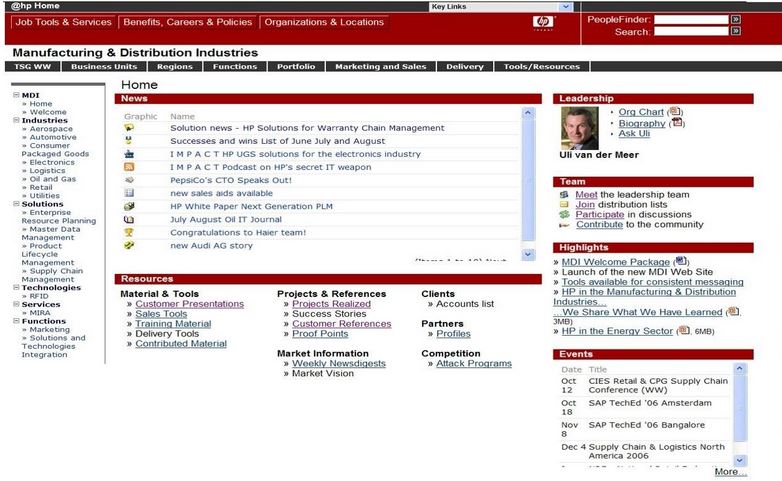KM Component 32 – Portals, Digital Experience, and Digital Workplace

Stan Garfield
Portals are web sites or apps that provide personalized capabilities to users through the use of customization, building blocks, and integration of multiple sources; historically, they have been leveraged as components of a KM strategy.
The term “portal” has several meanings. It can be a gateway website offering an array of services, a personalized home page that aggregates content from multiple sources, a document repository, or a sophisticated customizable user interface.
Enterprise portal vendors offer tools that promise to integrate diverse content through a highly-personalized user interface and advanced search capabilities. These portals are often positioned as knowledge management tools. Their importance has waned, giving way to new terminology such as Digital Experience Portal (DXP) or Digital Workplace. As an example, Gartner rebranded its annual portal conference to “Digital Workplace Summit.”
Gartner defines a digital experience platform (DXP) as an integrated set of technologies, based on a common platform, that provides a broad range of audiences with consistent, secure and personalized access to information and applications across many digital touchpoints. Organizations use DXPs to build, deploy and continually improve websites, portals, mobile and other digital experiences. DXPs manage the presentation layer based on the role, security privileges and preferences of an individual. They combine and coordinate applications, including content management, search and navigation, personalization, integration and aggregation, collaboration, workflow, analytics, mobile and multichannel support.
Digital workplaces use the intranet as a platform for information sharing, interoperability, user-centered design, and collaboration. They allow users to interact and collaborate with each other in a social media dialogue as creators (prosumers) of user-generated content in a virtual community, in contrast to intranet sites where users (consumers) are limited to the passive viewing of content created for them. Tony Byrne defines a digital workplace as “what an employee reads and does digitally while working.”
Internet portals such as AOL, Excite, Lycos, MSN, and Yahoo! were once the main gateways to the Internet, but their importance has also waned. They have limited personalization options, typically for location or language only. Google used to offer personalization through iGoogle. That name has been taken over by another company. See below for options for similar functionality.
Example of a Portal from HP

Platforms
- Acquia
- Adobe Experience Cloud
- Bloomreach
- CoreMedia
- Crownpeak
- HCL Digital Experience
- Huddle Enterprise Portal Software
- Jostle Intranet Portal Software
- Liferay Digital Experience Software
- Magnolia
- Microsoft SharePoint
- OpenText
Product Analysis
- Capterra
- CMSWire
- Forrester Wave: Digital Experience Platforms
- G2
- Gartner: Digital Experience Platforms (DXP)
- IDC: Digital Experience Management Software
Content from Lucidea

Stan Garfield
Please enjoy Stan’s additional blog posts offering advice and insights drawn from many years as a KM practitioner. You may also want to download a copy of his book, Proven Practices for Implementing a Knowledge Management Program, from Lucidea Press. And learn about Lucidea’s Inmagic Presto and SydneyEnterprise with KM capabilities to support successful knowledge curation and sharing
Similar Posts
Lucidea’s Lens: Knowledge Management Thought Leaders Part 98 – Rachad Najjar
Generative AI, expertise mapping, and knowledge sharing—Rachad Najjar has spent his career at the intersection of these disciplines. As the CEO of 3R Knowledge Services and former knowledge-sharing leader at GE Vernova, he has helped many organizations design smarter KM strategies. In this edition of Lucidea’s Lens, Stan Garfield highlights Rachad’s contributions to the field.
Lucidea’s Lens: Knowledge Management Thought Leaders Part 97 – Art Murray
As CEO of Applied Knowledge Sciences and Chief Fellow of the Enterprise of the Future Program, Art Murray champions innovative approaches to knowledge curation, digital transformation, and governance. Discover Art’s work and impact on knowledge management and organizational transformation.
Lucidea’s Lens: Knowledge Management Thought Leaders Part 96 – Peter Morville
Peter Morville is a pioneer in the fields of information architecture and user experience, with expertise in organizational strategy and planning. His specialties include findability, information architecture, user experience, usability, and systems thinking.
Lucidea’s Lens: Knowledge Management Thought Leaders Part 95 – Matt Moore
Matt Moore is a project/program manager, blogger, presenter, webinar host, and deep thinker. He has worked in the knowledge management field for over 20 years.




Leave a Comment
Comments are reviewed and must adhere to our comments policy.
0 Comments